How does gravity affect chemistry and biology? More than you might think – and you don’t have to visit space to find out, as Rachel Brazil discovers
When Isaac Newton came up with his universal theory of gravity in 1687, it’s unlikely he could have imagined that almost 330 years later, British astronaut Piers Sellers would be floating on the International Space Station with a chip from his apple tree. In the modern era of space exploration we have all become familiar with weightless astronauts floating around or doing acrobatics, but there are many effects of microgravity still unknown. Microgravity impacts how materials behave, how chemical reactions progress and how biology functions.
These questions may seem of most interest to fringe groups who are already talking about space colonisation, including entrepreneurs like Elon Musk. There is even already a space nation, claiming a global membership of 274,00 people, who have declared their satellite, Asgardia-1, a sovereign state. But for terrestrially bound scientists, microgravity can also provide a unique environment for understanding the fundamental properties of matter. Without gravity, things sometimes behave unexpectedly and this knowledge can help spark innovations on earth.
But experimenting in microgravity doesn’t always require space flight. There are a number of ways to create temporary microgravity environments here on Earth using free-fall conditions – where no other forces are acting against gravity. This can be achieved with huge drop towers, ‘sounding’ (instrument-carrying) rockets and parabolic aircraft.
’Those give you anything from seconds to minutes of microgravity,’ explains chemical engineer Eric Furst from the University of Delaware in the US – but that isn’t always enough when your experiment takes several hours. The answer for Furst was the International Space Station (ISS). First launched in 1998, the 73m long station is now a hub for microgravity research. ‘The ISS has developed into this really unique and incredible research facility that’s 250 miles [400km] above the earth,’ says Furst.
While it does provide microgravity, the space station is in low earth orbit and therefore experiences around 90% of the gravitation force of Earth. However, those on board still experience microgravity as the station is in freefall – constantly falling towards Earth – but moving at a speed of 17,500mph (28,000kph) so staying in orbit..
Burning without buoyancy
One of the earliest chemical reactions investigated on the ISS was the combustion of fuels. Dennis Stocker, a scientist at Nasa Glenn Research Center explains the changes seen in microgravity: ‘I don’t expect the fundamental reactions are changing, but the transport of the species to the reaction zone changes dramatically.’

In gravity, combustion is driven by convection – gravity pulls down colder denser air to the base of the flame and hot gases rise, feeding fresh oxygen into the reaction. But in microgravity this doesn’t happen; there is only random diffusion of oxygen. This changes the shape of the flame so it is no longer a teardrop. ‘In a microgravity environment where there is effectively no up or down, there is still the hot gases generated by combustion, but they simply expand in all directions. So a candle flame becomes spherical,’ says Stocker. He adds that because of the slower diffusion of oxygen, combustion can be weaker, but sometimes more persistent. ‘Without the hot gases rising, the carbon dioxide and water vapour tends to collect around the flame which tend to be less robust. But although weaker, it’s been shown that they will burn under conditions where they don’t on earth.’
Stocker is working on the ongoing Acme project (advanced combustion via microgravity experiments), and current experiments are looking at the impact of electric fields, particularly on soot formation – the amount of carbon and organics produced due to insufficient oxygen reaching the reaction. ‘We have conducted tests on the space station where we’ve been able to effect the sooting characteristics of a flame and use an electric field to make the flame become non-sooty,’ says Stocker.
The ISS has a vending-machine-sized 100-litre combustion chamber facility where astronauts will prepare the experiments for scientists to run remotely from Nasa’s Cleveland-based Glenn Research Centre. Without convection, scientists can follow how charged ions produced in combustion will respond to a powerful electric field, applied via a copper mesh at 10,000V in an artificial air environment.
‘Microgravity has a really strong effect on [soot production] because on Earth the hot gas is rising,’ says Stocker. ‘[In] microgravity, flames will be absent of that buoyant acceleration and you get a longer time for the soot to grow within the flame, and you can get very sooty flames.’ The project is still underway, but the hope is that they may learn how electric fields could stabilise fuel-lean flames and produce less polluting combustion for terrestrial use.
DROP!
Experimenting in the absence of convection currents was also attractive to artificial photosynthesis researcher Katharina Brinkert at the California Institute of Technology in the US. She figured that her solar photoelectrochemical water-splitting cell would be ideal for generating oxygen or fuel, or removing carbon dioxide on long-haul space missions, where sunlight is still abundant. But Brinkert also realised that experimenting in microgravity might provide ideas for making her cells work more efficiently on earth.

Brinkert looked at the half-cell process of hydrogen evolution from her cell, which consisted of a p-type indium phosphite semiconductor beneath a rhodium electrocatalyst layer in a perchloric acid electrolyte. The experiment were carried out in the Bremen Drop Tower at the University of Bremen in Germany. This evacuated tower is 146m tall and objects dropped within it experience 4.74s of microgravity. Brinkert used the catapult mode which flings the experiment to the top of the tower before dropping, which extends the period of microgravity to 9.3s.
The cell was placed inside a capsule with a light source so that the generated photocurrent could be recorded during those precious 9.3 seconds. What she found was that in microgravity the photocurrent was immediately halved. ’The problem is that [in microgravity] gas bubbles stick to the electrode surface and are not repelled in any way,’ says Brinkert. As with combustion, the efficiency of the reaction is reliant on gravity – in this case, the removal of hydrogen from the electrode surface – without it, a ‘froth’ layer built up.1
The solution devised by Brinkert and colleagues was to design a new electrode surface. ‘We looked for a way to repel bubbles from the surface and one way of doing this was to introduce a nanostructure.’ The nanostructured rhodium electrocatalyst layer created ‘catalytic hotspots’ that prevented bubbles building up. ‘You really create the bubbles at the tip of these [nano]-structures,’ says Brinkert. As well as providing potential future energy sources for space exploration, using microgravity has helped shed light on design flaws for terrestrial devices that would not be as apparent in normal experiments.
Reaching thermodynamic equilibrium
In some fields, microgravity provides a way of removing the kinetic factors that interfere with reaching a thermodynamic equilibrium. This is the case with the self-assembly of colloids investigated by Furst on the ISS. ‘Often you don’t get that equilibrated structure, you get some sort of structure dictated by kinetic bottlenecks, you get glasses or you get gel-like structures,’ he explains.
Only in microgravity can these effects can be observed
In 2009 Furst sent his first experiments up to the ISS to study the magnetic-field-induced assembly of 1µm-sized polystyrene spheres in water.The spheres were surface-functionalised with magnetite. In such systems on Earth, field-induced phase transitions are often stopped or ‘kinetically trapped’, but these effects disappear without the sedimentation that occurs in gravity. ‘In a magnetic field they respond as little magnets and that’s the way that we can start to direct their assembly. We can polarise those magnetic fields and [the spheres] chain up and begin to interact with one another,’ says Furst.
Furst also found another unusual effect that is only seen in microgravity. When the magnetic field was turned off, the freely suspended particle columns begin to buckle due to an expansion effect. ‘We hadn’t expected this result at all,’ says Furst. ‘It was really an unusual thing – you can think about it as essentially a thermal expansion, much like rails on a railroad might expand and if you don’t have the right joints they can buckle laterally when they expand.’ The expansion seems to be linked to changes in entropy – when the magnetic field is removed the structure will tend to become less ordered.2 But only in microgravity can these effects can be observed.
Discovering a new field
According to metallurgist Martin Glicksman from the Florida Institute of Technology in the US, in 1977 Nasa had decided that microgravity might be the ideal place for manufacturing better materials. One idea, he says was to manufacture perfect ball-bearings in space by solidifying the perfect liquid metal spheres that would form.
‘[It] sounds like a very clever approach to making ball bearings, but it overlooks some important physical chemistry and some important metallurgy – namely the process of crystallisation and solidification, which winds up completely ruining the spherical geometry,’ says Glicksman. The dendritic, branch-like growth seen in most crystallisation scuppered the idea, but Glicksman says, it led to a programme of research into crystallisation in microgravity that continues today.
I think it explains aspects of snowflakes’ fundamental forms
Glicksman’s first experiements were carried out on the Space Shuttle Columbia in the 1990s, but in 2011 he was reviewing some unpublished video footage of melting pivalic anhydride crystals (trimethylacetic anhydride, C10H18O3), which melts at 36°C. He became focused on small crystallites that separated from the melting crystal. ’We saw something remarkable – the crystallites were initially in the form of small needle-shaped ellipsoids. As these little crystallites melted away and shrank, we noticed right towards the very end, when the crystallites were typically a few millimetres long and maybe a few hundred microns in diameter, they went from these very sharp needle-like forms and suddenly collapsed into spheroids as they disappear in the last stages of melting,’ describes Glicksman.
He wondered how this effect was related to dendritic crystals growth, including the growth of snowflakes. ‘Physicists have told everybody that pattern formation in crystal growth is due to noise,’ says Glicksman: the solid–liquid interface picks up random noise signals and these turn into the structural patterns seen in crystal growth. But Glicksman began to question this and with several colleagues developed a model to explain these microgravity results using a new thermodynamic field, which he calls the bias field.
‘[The effect is caused by] a thermodynamic field which exists on all curved interfaces, as long as there is surface tension and curvature,’ explains Glicksman. In the case of crystals, the field modifies the melting point very slightly along the interface and this is responsible for the induction of complex melting and crystal growth patterns. Working with computational physicists, he has been able to predictively model the field’s effect.3
In gravity these effects are unlikely to have been observed, even though they explain some very fundamental material properties. ‘I think it explains aspects of snowflakes’ fundamental forms and also technological castings and welding. Though noise is present I don’t doubt, but the fundamental patterns are kicked off by this inherent thermodynamic field that nature gives us whenever we crystallise materials,’ says Glicksman.
Life in microgravity
Microgravity can help us understanding the physical world, but what are its effects on biology? We know muscle and bone density decrease in microgravity and many people will think about past astronauts being carried out of landing-pods, unable to walk due to problems maintaining blood pressure after periods spent in microgravity (although now usually unnecessary due to strict exercise regimes). ‘That’s very similar to people who are older or bed-bound for a while, where essentially the cardiovascular system is not used to [working against] gravity,’ explains Nathaniel Szewczyk from the University of Nottingham’s centre for musculoskeletal ageing research in the UK.

But not all life responds to microgravity in the same way. ‘Across species, the most consistent thing that you see is altered metabolism. That basically manifests itself, depending upon the species, as increased or decreased growth. So for example some bacteria and viruses are more virulent in microgravity, some are less,’ says Szewczyk. As might be expected, changes occurring in gene expression recently identified are found in the genes that control metabolism and the biochemical pathways that give us energy.
But there has always been a question mark as to whether biological changes to astronauts in microgravity are caused by a lack of gravity or just a lack of activity. To test this Szewczyk worked with a Japanese team on the ISS to compare how worms respond to inactivity and microgravity. ‘We use [C. elegans] worms that have a temperature-sensitive mutation in their neuromuscular signalling. When you shift the temperature that the worms are grown at, essentially they can’t do neuromuscular signalling,’ says Szewczyk. This means the worms are unable to move and so the effects of microgravity alone can be isolated. Worms taken to the ISS are returned to earth frozen, where their gene and protein expression can be compared.
Relative to those grown on earth, they found worms grown in microgravity had decreased expression levels for genes responsible for muscle filaments, as well as cytoskeletal elements and mitochondrial metabolic enzymes. So microgravity does seem to weaken cytoskeletal networks, muscle proteins and seems to switch the metabolism to an energy-saving mode.4
Epigenetics – the way environmental factors change gene behaviour – may provide answers to exactly what changes occur to life in mirogravity. Epigenetics works through DNA methylation and histone modification, which provides a mechanism for silencing or turning on genes. A team from Hiroshima University in Japan led by Louis Yuge have tried to probe the epigenetc changes that lead to muscle loss in the absence of gravity.5 They used another method for creating microgravity – a 3D clinostat device called a Gravite – which simulates microgravity by rotating the device in two axes to average gravitational pull in all directions. Yuge looked at levels of expression of a gene called Myod1 which regulates differentiation of muscle cells. Expression levels were significantly lower in microgravity and the effect could be replicated in gravity when cells were treated with a drug that blocked DNA methylation. So this strongly suggests muscle depletion in microgravity is linked to changes in DNA methylation.
Membranes in space
Clearly microgravity has a physiological effect on humans and other lifeforms – but what are the causes on a molecular level? How do cells detect gravity? Something must be causing epigenetic changes to occur; there must be a mechanism. Molecular biologist Florain Kohn from the University of Hohenheim in Stuttgart, Germany, has been looking for it.
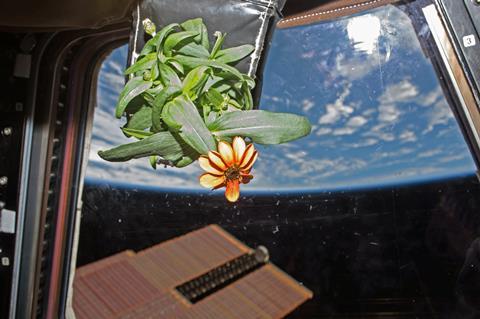
There is some evidence that ion channels can be sensitive to gravity. These gate proteins allow molecules through the membrane and in E. coli, some ion channels allowed more molecules to diffuse through than in microgravity, and stayed open for longer in increased gravity.6 But Kohn has been looking at the membranes themselves. ‘From Earth-bound experiments we have known for decades that if you change membrane parameters, all ion channels are affected.’
Cell membranes are composed of a phospholipid bi-layer that have a hydrophilic phosphate head and a hydrophobic tail consisting of two fatty acid chains. Kohn decided to look at how gravity changed the fluidity or viscosity of the membrane in cells and in empty artificial membranes. He used both parabolic flights and sounding rockets, providing 22 seconds and 6 minutes of microgravity respectively.7 and measured the fluorescence polarisation anisotropy (FPA), This technique gauges membrane viscosity using the amount of fluorescence emitted from a dye which is attached to the membrane itself..
‘We see in microgravity the membrane gets more fluid and if we go to hypergravity, it gets more stiff,’ confirms Kohn. ‘Every cell has a cell membrane, no matter if it’s a brain or skin cell it reacts to changes in gravity, because the membrane fluidity gets changed no matter which cell it is.’ But he remains cautious. ‘We are not sure what exactly is happening, what it means on the molecular level. Is the [membrane] diameter changing or is the distance between the molecules changing? We don’t [yet] know.’
One interesting consequence of this is the effect of pharmaceuticals on human physiology in microgravity. ‘The effect of medication changes in microgravity because, for example, in anaesthetics or pain relievers, they have to integrate into the membrane and if the state of the membrane is changed, this means that the integration of these medications is changed.’ Kohn says it is already known that some medications, such as ibruprofen and lidocaine, work differently in microgravity and this could explain why. In the long term we don’t know whether biological systems are able to adapt and change in microgravity and whether this might allow drugs to work in the same way as in normal gravity, after an adjustment period. ‘If we are talking about sending people to Mars or somewhere else then we should really be sure that they work,’ he says.
There are many things we can still learn from and about microgravity and it seems likely that research will continue in preparation for more space exploration. In February 2018, Nasa announced plans to return to the moon and it is developing a lunar orbital outpost ‘to provide the foundation for human exploration deeper into the solar system’, starting construction in 2020. Humans have not evolved to live in microgravity and we are only just beginning to understand the changes it can cause. Szewczyk says the biggest danger though is not microgravity, but radiation, which would likely be much more dangerous beyond the Earth’s protective charged-particle Van Allen belt. ‘I think if people want to do that when the money is put behind it, it will happen, regardless of whether there are negative health consequences or not,’ says Szewcyk.
Rachel Brazil is a science writer based in London, UK
References
1 K Brinkert et al, Nat. Commun., 2018, 9, 2527 (DOI: 10.1038/s41467-018-04844-y)
2 J W Swan, P A Vasquez and E M Furst, Phys. Rev. Lett., 2014, 113, 138301 (DOI: 10.1103/PhysRevLett.113.138301)
3 M E Glicksman and K Ankit, J. Mater. Sci., 2018, 53, 10955 (DOI: 10.1007/s10853-018-2356-7)
4 A Higashibata et al, Microgravity, 2016, 2, 15022 (DOI: 10.1038/npjmgrav.2015.22)
5 T Furukawa et al, Microgravity, 2018, 4, 11 (DOI: 10.1038/s41526-018-0045-0)
6 M Goldermann, W Hanke, Microgravity Sci. Technol., 2001, 13, 35 (DOI: 10.1007/BF02873330)
7 F Kohn, J Hauslage and W Hanke, Microgravity Sci. Technol., 2017, 29, 337 (DOI: 10.1007/s12217-017-9552-y)


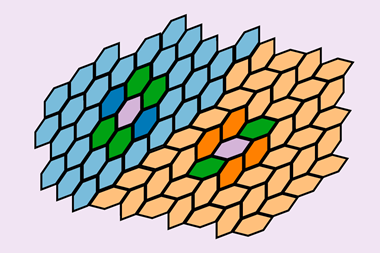
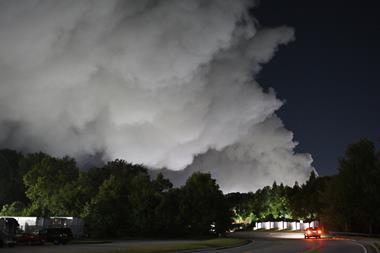
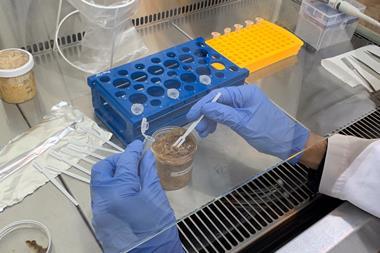






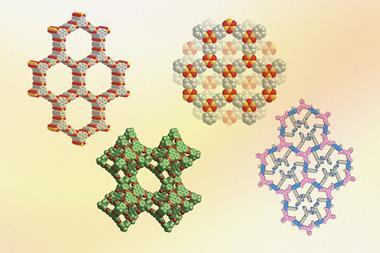
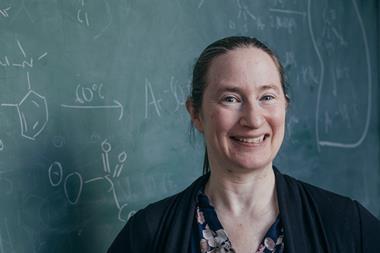
No comments yet